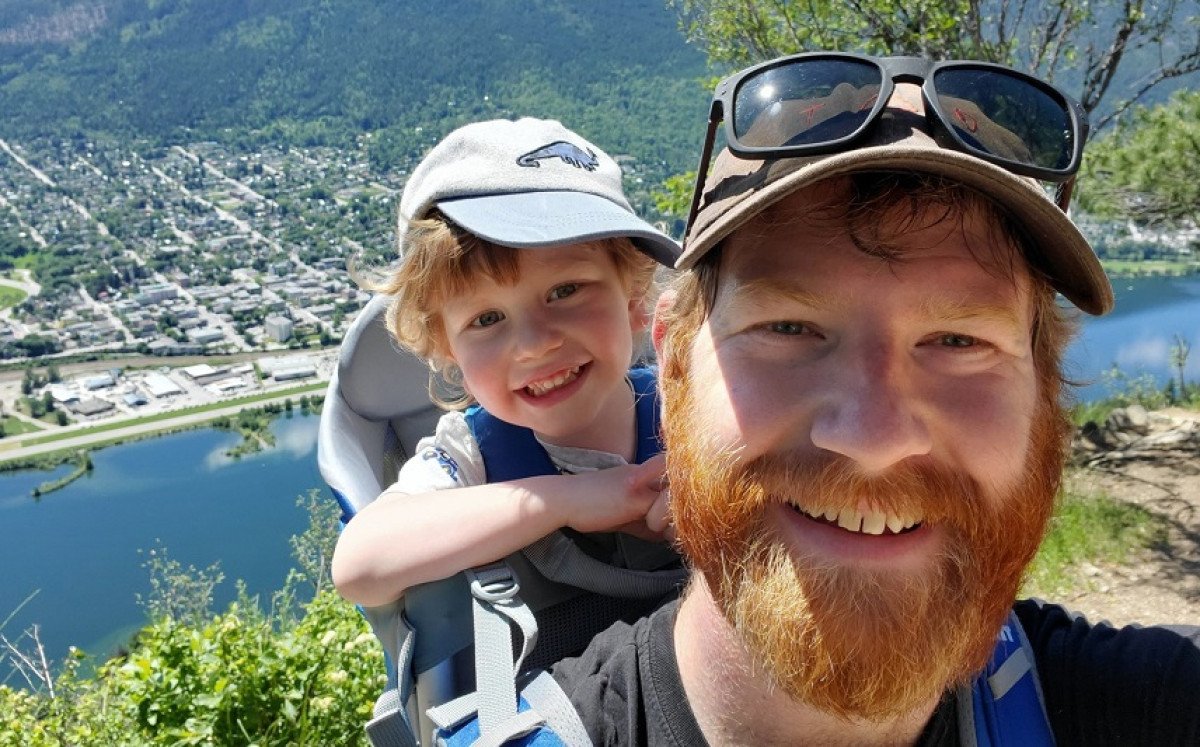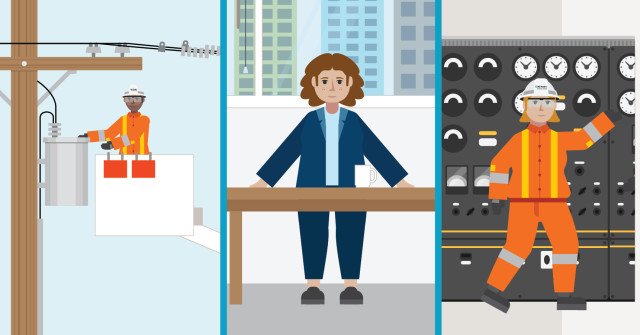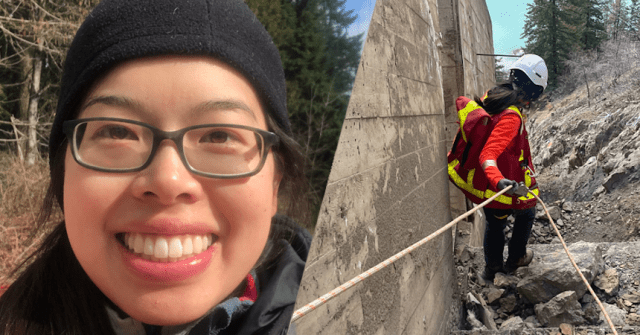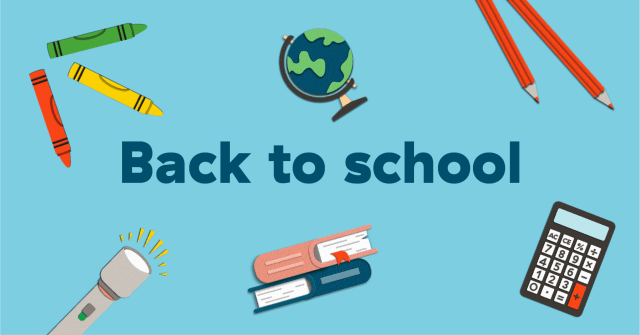The case for a career in the trades at BC Hydro
The following includes helpful information for high school teachers and counsellors around trades as a career option, and the prerequisites to following that path.
As the most veteran presence in a room of four BC Hydro electricians, Spencer Hamilton dips back into the last century for a snippet of what it was like to choose a life as an electrician.
“When I graduated high school in 1997, I almost had to fight the counsellors at the school to convince them that I was going to be an electrician, because I had pretty good grades and they wanted to point me in other directions,” says Hamilton, an electrical station manager for BC Hydro at Campbell River.
Growing up on Vancouver Island, Hamilton considered engineering, but didn’t have the money for university. So he took an electrician foundations course right after high school, worked as an apprentice electrician in Edmonton and eventually wound up at BC Hydro.
John Cole, a sub-foreman electrician and trades training instructor who now works out of Nelson, says he also noticed the pushback, even among his friends, against the idea of a life in the trades.
“One of the big misconceptions around trades is that you're going to have this kind of low-paying job where you're not using your head, just doing some wiring and drilling some holes.”
“I remember having friends of mine say stuff like, ‘Oh, how's Hammers 101? But we work with so many cool pieces of equipment. And I'm rarely going through a day at work where I don't learn something. You’re engaged mentally, and you’re actually out physically doing something. I think that makes for huge job satisfaction.”
Attitudes towards trades as a career have improved over the last 20 years, but there’s still work to do. And at or near the top of the list is a lack of awareness among teachers, parents, and students around the prerequisites for the work.
There’s a big emphasis today at B.C. schools on the university track. And STEM courses (Science, Technology, Engineering, and Math) are all the rage for the range of exciting, well-paid professions they open up. But how many people are aware that a lot of those STEM-related courses also apply to trades training with BC Hydro?
If you want to apply for a spot as an apprentice electrician at BC Hydro, the first requirement's to have English 12, Math 12, and Physics 12.
A STEM education served Krista Ohman-Relph well once she decided, long after high school, to pursue a career as an electrician at BC Hydro. Voted “Most likely to go to university" in her Grade 12 year, she did just that. Then changed her path years later.
“I didn't start with BC Hydro until I was 32,” says Ohman-Relph, who lives in Invermere and works as a crew lead at 10 substations and one small generating station in the East Kootenays.
“I did a bit of university but it wasn’t my jam. And thankfully, I had the prerequisite courses back in high school. And I finally realized that I just want to be outside. I wanted to work with my hands. I wanted to use my brain, and troubleshoot and problem solve.”
Skills Trades BC works with the BC Ministry of Education and Child Care to offer funding for students to complete their technical training while still in high school. They also provide specific information and resources for Indigenous youth exploring skilled trades.
Girls to the Power of math provides free mentoring– by high school girls – to elementary school girls.
BC Hydro apprentices earn 70% of the full trade rate while they learn, and training opportunities include electrician, cable splicer, meter technician, power line technician, mechanic, vehicle tradesperson, winder, and interchange plant operator. Other options include pre-apprenticeship power line technician (PLT), engineers-in-training, technologist trainee, and co-op learning. There are also tour guide positions at BC Hydro Visitor Centres, and a youth hires program (summer employment). Get more information about careers at BC Hydro.
Not all BC Hydro electricians work on power lines
Asked what might be the biggest myth about a career as an electrician at BC Hydro, Hamilton takes a split-second to respond.
“When people think of trades at BC Hydro, they typically think of power line technicians (PLTs),” says Hamilton, now an electrical station manager for BC Hydro at Campbell River. “These are the trades people most often seen working in the community. But in reality, there are 10 different trades groups working at BC Hydro to keep the lights on.”
To be fair, there are more than 600 PLTs working for BC Hydro, restoring power and doing maintenance on our extensive network of transmission and distribution power lines across B.C. And it’s a dream role for those who get jazzed by the idea of going up in the air in a bucket to fix a power line, including one aspiring PLT who’s 6 years old.
But there are others working in trades at BC Hydro, including about 230 electricians such as Hamilton, Ohman-Relph, Cole, and Amit Sanghera, all members of BC Hydro’s apprentice electrician sub-committee. And these four clearly love what they do.
”I didn't want to be up in a bucket truck with snow going sideways mixed with a bit of rain,” says Cole.
“I wanted to be working on smaller circuits, technical stuff, going through wiring diagrams. And it wasn't until I went back for my second-year electrician schooling and met some electricians working for BC Hydro that I found out that what you do as an electrician here is vastly different from what you might imagine.”
What strikes Amit Sanghera is the quality of mentorship he was exposed to as an apprentice.
“If you ask the right questions, you always get help,” says Sanghera, a Campbell River local who now manages BC Hydro’s Vancouver and Burnaby substations. “We have training programs to actually train our journeypersons to become better mentors for apprentices as well.”
Be willing to move around B.C.
If you want to train and work in your hometown, a job as a BC Hydro electrician won’t likely be your cup of tea. During your 48 months as an apprentice, you do on-the-job and in-school technical training for 10 weeks per year. After a probationary period, you’re required to work in three or four locations around B.C., typically in places like Victoria, Campbell River, the Lower Mainland, Cranbrook, Bridge River, Mica Creek, Prince George, and Hudson's Hope.
“Moving around can be a deal breaker for some folks,” says Hamilton, who works in his hometown of Campbell River, but only after doing BC Hydro work at four other locations around B.C. “You need to be willing to move to gain different experience. Every single job in the 40-plus different headquarters is different. So you have to be versatile.”
‘It’s not safety third, it’s safety first’
Not all trades positions in B.C. are created equal. Working in the trades at BC Hydro gives you a minimum three weeks of vacation, plus overtime pay, designated days off with pay, health and vision care and dental benefits.
It also provides you with the training, regulations, and protective equipment to do the job safely.
“For me, the change from going from a small residential high-rise contractor to working for a company like BC Hydro was significant,” says Ohman-Relph. “At BC Hydro, I knew I was safe doing my job, whereas I didn't feel safe when I was working outside of the company. They’re not kidding when they say it's not ‘safety third’. It’s ‘safety first’.”
The other benefits of working in trades at BC Hydro? Great opportunities for advancement and – as a result of getting paid to learn on the job – to be financially stable.
“I saw a government handout that explained how far you’ll get ahead by going into a trade first, versus going to university and taking out huge student loans,” says Hamilton. “You can afford to buy a house five or six years earlier, so you’re really getting ahead.”
Learn about opportunities for students and graduates at BC Hydro.
Related activities on Power Smart for Schools
We have activities that provide interactive, hands-on experiences for students, including several specifically related to the science of electricity.
The path of electricity (Grade 7)
Students learn how electricity is made and how it gets to where we need it.
Investigating circuits (Grade 9)
Two activities built around the Big Idea that electric current is the flow of electric charge.
Electricity generation and energy transformations (Grade 10)
A group of three activities around the Big Idea of how energy is conserved, and how its transformation can affect living things and the environment.
Decision-making for renewables (Grades 10-12)
Students role-play various positions at a fictitious energy company and explore the challenges and opportunities of moving to clean, renewable energy.
Workplace safety (Grades 10-12)
Youth ages 15-25 are especially at risk for workplace accidents. Students explore workplace scenarios to inspire critical thinking around electrical safety
Working in the community (Grades 8-12)
A video introduces presents electrical safety hazard scenarios and poses questions to discuss as a class.






